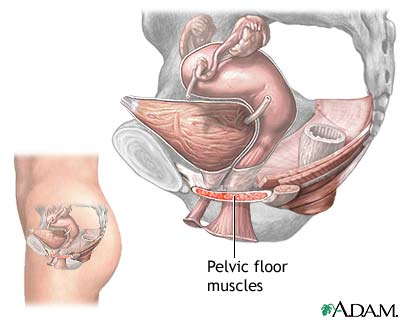


 |  |  |
| | ||
Anterior vaginal wall repair (surgical treatment of urinary incontinence) - series: Aftercare
 |
|
Women treated with this procedure have approximately a 60% rate of success in relieving symptoms. You should avoid activities that cause an increase in abdominal pressure, such as straining, sneezing, and coughing. Try to tighten your pelvic muscles when coughing or sneezing to support the bladder. You may need to urinate at least every 2 to 3 hours, or perform clean intermittent self catheterization (CISC), to keep your bladder from getting too full and putting pressure on the stitches. You should avoid any activities that require lifting or straining. You may need to take stool softeners or gentle laxatives to prevent constipation and straining with bowel movements.
Update Date: 4/24/2008 Updated by: Peter Chen, MD, Department of Obstetrics and Gynecology, University of Pennsylvania Medical Center, Philadelphia, PA. Review provided by VeriMed Healthcare Network. Also reviewed byDavid Zieve, MD, MHA, Medical Director, A.D.A.M., Inc.
